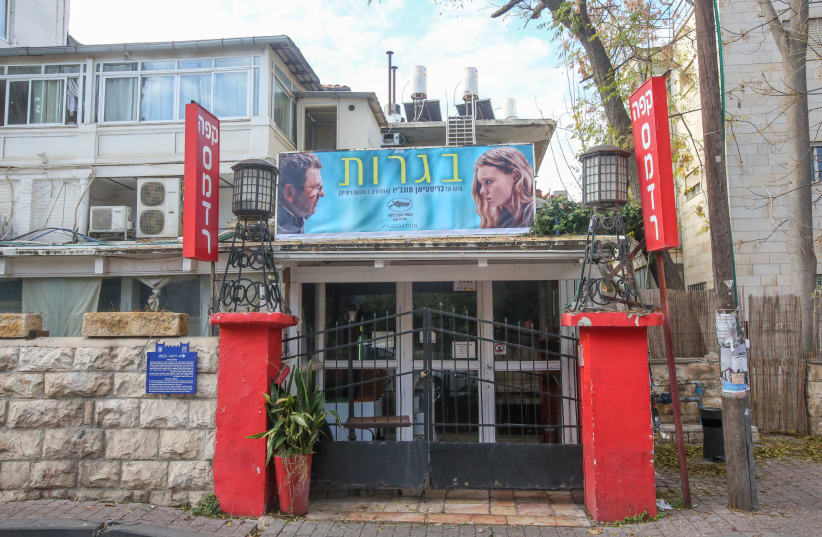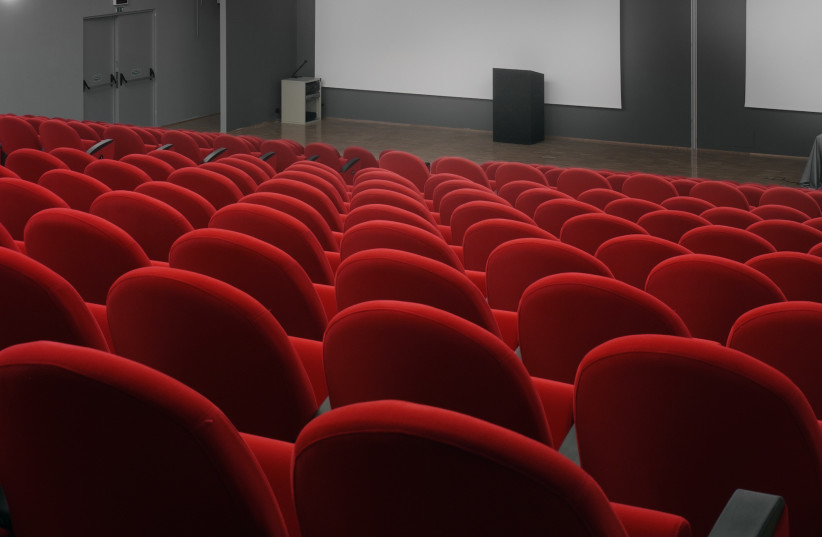If loyalty and attendance are anything to go by, my family alone would ensure the survival of the film industry. My great-grandmother, for instance, was such a devotee, she had her own designated seat in the Tower cinema, Peckham, London, where she would spend almost every afternoon watching silent black and white movies, which she claimed were better than the later “talkies.” So enthusiastic was she that she walked off with a carton of the stuff the cinema management sprayed around the auditorium to keep it fresh. Apparently, she wanted her home to smell like the cinema, a misdemeanor for which my grandmother, her daughter, was called to account.
The generations that followed maintained her devotion, always prepared to watch three or four films at festivals, one after the other, and converting reluctant partners into fellow fanatics. And now I have come to live next to the preserved exterior of what used to be one of Israel’s grand movie theaters.
There is ample evidence of the Israeli love of film, which today results in international recognition of the achievements of its industry, its film schools, directors and actors. But much less attention has been paid to its movie theaters, though from the 1940s through the 1960s and ’70s, they were an important physical symbol of Israeli cultural life.
The fascination with the medium began long before the creation of the state. As early as the 1900s, silent films were being shown in informal settings like the Lorenz Café on Jaffa Road in Neve Tzedek, before a dedicated silent movie house was established in Jerusalem in 1912 on another Jaffa Road. It was called the Cinema International and was by all accounts a popular venue, especially with male customers who felt obliged to make up for the lack of audio by yelling encouragement to any damsel in distress and warnings to the hero in mortal danger. Smoking and the consumption of sunflower seeds were part of an enjoyable night out.
The arrival of “talking pictures” in 1931 managed to introduce a new tradition of silence when the movie came on, a transition not entirely successful. Today the munching of popcorn and frequent consultation with mobile phones can drive a keen film fan to contemplate a violent reaction.
The oldest movie theater in Israel built on a grand scale was the Eden in what became Tel Aviv. It was opened in 1914 – five years after Tel Aviv was inaugurated – with two 800-seater auditoriums, one in the open air. Weirdly, it was closed during World War I on the grounds that its generator could be used to send messages to enemy submarines. It reopened during the period of the Mandate, but was closed for good in 1974.
The 1930s was the golden age of movie theaters built in the Art Deco style, not only in Israel but all over Europe. The Odeon of my childhood was a typical example. The Moghrabi opened in Tel Aviv in 1930, its grandeur immortalized on film as the scene of jubilant crowds following the UN General Assembly acceptance of the Partition Plan in 1947. Sadly, it was destroyed by fire in 1986.
The Alhambra, with 1,000 seats, was opened in Jaffa in 1937 to serve not only as a cinema but also as a concert hall, while earlier in Jerusalem, the Smadar was inaugurated, and I am happy to say that this small movie theater still exists as part of the Lev group showing commercially released as well as indie films and acting as one of the venues for the annual Jerusalem Film Festival.
It did, however, suffer the usual checkered history. It was originally German-owned, was built in the German colony, but changed its name to the Orient in 1935 with new Jewish management. After 1948, it was purchased by four ex-soldiers, one of whom, a certain Aryeh Chechik, bought out the others and became famous in the area for being the guy who sold the tickets, collected them at the door and operated the projector while his wife ran a stall outside the cinema selling refreshments.
The Rama was opened with a flourish in 1938 on the corner of Jabotinsky and Bialik streets in Ramat Gan, a prominent symbol of the Art Deco style. It had 1,000 seats and served as a movie theater, a regular theater and a conference center. The occasion was considered sufficiently important to be held in the presence of the governor of the British District to the accompaniment of the then Eretz Israel Symphony Orchestra, later the Israel Philharmonic. The Rama was of particular importance because it served the populations of the surrounding Arab villages. From 1945 to 1947, the cinema specialized in Arab, particularly Egyptian films every Thursday evening.
The Café Rama, which was next to the cinema, was a favorite meeting place for artists, film fans and the general public for many years. The cinema closed in 1982 and lay vacant until an enterprising construction consortium decided to buy the building, preserve the Art Deco exterior, and build a residential tower on the plot. And this is what I now call home. There are tentative plans to decorate the foyer with film posters and other memorabilia of the golden age of Israeli movie theaters, memories worth preserving. There are now far fewer of them in the country today, though those that still exist include many screens. Even today, nothing quite beats a night at the movies! ■
The writer is an author and former head of the British Desk at the Jerusalem Foundation.

